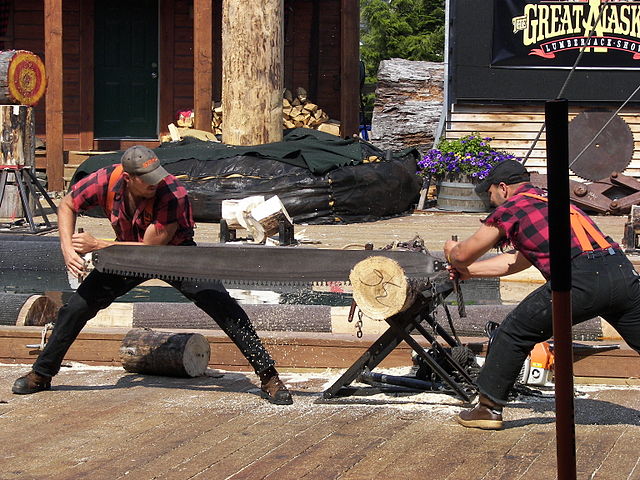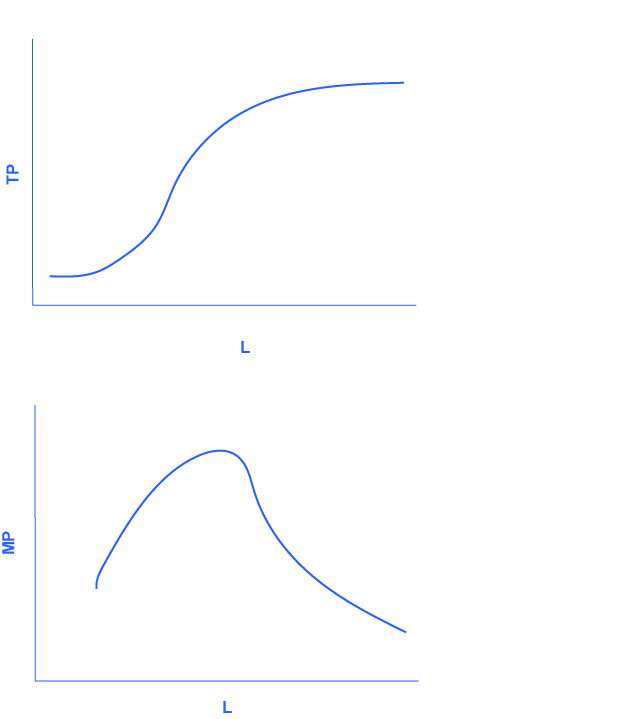What Would Cause A Firmã¢â‚¬â„¢s Production Function To Change?
Production, Costs, and Industry Structure
Production in the Short Run
Learning Objectives
By the end of this section, you volition be able to:
- Empathise the concept of a production function
- Differentiate between the different types of inputs or factors in a production function
- Differentiate between fixed and variable inputs
- Differentiate between production in the brusk run and in the long run
- Differentiate betwixt total and marginal product
- Understand the concept of diminishing marginal productivity
In this affiliate, nosotros desire to explore the relationship between the quantity of output a firm produces, and the cost of producing that output. We mentioned that the cost of the production depends on how many inputs are required to produce the product and what those inputs price. We tin can answer the former question past looking at the business firm's production office.
The production process for pizza includes inputs such equally ingredients, the efforts of the pizza maker, and tools and materials for cooking and serving. (Credit: Haldean Brown/Flickr Creative Commons)

Product is the process (or processes) a business firm uses to transform inputs (e.1000. labor, upper-case letter, raw materials) into outputs, i.e. the appurtenances or services the business firm wishes to sell. Consider pizza making. The pizzaiolo (pizza maker) takes flour, h2o, and yeast to make dough. Similarly, the pizzaiolo may take tomatoes, spices, and water to make pizza sauce. The melt rolls out the dough, brushes on the pizza sauce, and adds cheese and other toppings. The pizzaiolo uses a peel—the shovel-like wooden tool– to put the pizza into the oven to cook. Once broiled, the pizza goes into a box (if it's for takeout) and the customer pays for the proficient. What are the inputs (or factors of product) in the product process for this pizza?
Economists separate factors of production into several categories:
- Natural Resources (Country and Raw Materials) – The ingredients for the pizza are raw materials. These include the flour, yeast, and h2o for the dough, the tomatoes, herbs, and water for the sauce, the cheese, and the toppings. If the pizza identify uses a wood-burning oven, nosotros would include the woods as a raw fabric. If the institution heats the oven with natural gas, we would count this as a raw material. Don't forget electricity for lights. If, instead of pizza, we were looking at an agronomical product, like wheat, we would include the country the farmer used for crops here.
- Labor – When nosotros talk about production, labor means human endeavour, both physical and mental. The pizzaiolo was the primary instance of labor here. He or she needs to be potent enough to whorl out the dough and to insert and call back the pizza from the oven, merely he or she too needs to know how to brand the pizza, how long information technology cooks in the oven and a myriad of other aspects of pizza-making. The business may also have 1 or more than people to work the counter, take orders, and receive payment.
- Capital – When economists uses the term majuscule, they do non hateful financial capital (coin); rather, they hateful physical capital, the machines, equipment, and buildings that one uses to produce the product. In the case of pizza, the capital includes the peel, the oven, the building, and whatsoever other necessary equipment (for example, tables and chairs).
- Technology – Engineering science refers to the procedure or processes for producing the product. How does the pizzaiolo combine ingredients to make pizza? How hot should the oven be? How long should the pizza cook? What is the best oven to use? Gas or wood burning? Should the restaurant make its own dough, sauce, cheese, toppings, or should it buy them?
- Entrepreneurship – Product involves many decisions and much knowledge, even for something as unproblematic every bit pizza. Who makes those decisions? Ultimately, it is the entrepreneur, the person who creates the business organisation, whose idea it is to combine the inputs to produce the outputs.
The cost of producing pizza (or whatsoever output) depends on the corporeality of labor capital, raw materials, and other inputs required and the toll of each input to the entrepreneur. Let's explore these ideas in more detail.
We tin can summarize the ideas so far in terms of a production function, a mathematical expression or equation that explains the technology relationship between inputs and outputs:
[latex]Q=f\left[NR\text{,}\phantom{\rule{0.2em}{0ex}}L\text{,}\phantom{\rule{0.2em}{0ex}}K\text{,}\phantom{\rule{0.2em}{0ex}}t\text{,}\phantom{\rule{0.2em}{0ex}}E\correct][/latex]
The production part gives the answer to the question, how much output tin the firm produce given different amounts of inputs? Production functions are specific to the product. Different products have different product functions. The amount of labor a farmer uses to produce a bushel of wheat is likely different than that required to produce an automobile. Firms in the same industry may have somewhat different production functions, since each business firm may produce a niggling differently. Ane pizza restaurant may brand its ain dough and sauce, while another may purchase those pre-made. A sit-downward pizza restaurant probably uses more labor (to handle tabular array service) than a purely take-out restaurant.
We can draw inputs as either fixed or variable.
Fixed inputs are those that can't hands exist increased or decreased in a short menstruum of time. In the pizza example, the edifice is a fixed input. Once the entrepreneur signs the lease, he or she is stuck in the edifice until the charter expires. Fixed inputs ascertain the firm'due south maximum output chapters. This is coordinating to the potential real Gross domestic product shown past society's production possibilities curve, i.e. the maximum quantities of outputs a gild can produce at a given time with its available resources.
Variable inputs are those that can easily exist increased or decreased in a short period of time. The pizzaiolo tin club more than ingredients with a phone phone call, so ingredients would exist variable inputs. The owner could hire a new person to work the counter pretty chop-chop every bit well.
Economists oftentimes use a curt-hand grade for the production role:
[latex]Q=f\left[L\text{,}\phantom{\dominion{0.2em}{0ex}}K\right]\text{,}[/latex]
where L represents all the variable inputs, and Thou represents all the fixed inputs.
Economists differentiate between brusk and long run product.
The short run is the menstruation of time during which at to the lowest degree some factors of production are fixed. During the period of the pizza eatery lease, the pizza eating place is operating in the short run, because it is express to using the current building—the possessor can't choose a larger or smaller building.
The long run is the flow of time during which all factors are variable. Once the charter expires for the pizza restaurant, the shop owner can movement to a larger or smaller place.
Permit's explore product in the short run using a specific example: tree cutting (for lumber) with a two-person crosscut saw.
Production in the short run may be explored through the instance of lumberjacks using a 2-person saw. (Credit: Wknight94/Wikimedia Commons)

Since by definition capital is stock-still in the curt run, our production function becomes
[latex]Q=f\left[L\text{,}\phantom{\dominion{0.2em}{0ex}}\stackrel{-}{One thousand}\right]\phantom{\rule{0.2em}{0ex}}\text{or}\phantom{\rule{0.2em}{0ex}}Q=f\left[L\right][/latex]
This equation only indicates that since capital is stock-still, the amount of output (east.g. trees cut downwards per 24-hour interval) depends just on the amount of labor employed (e.thou. number of lumberjacks working). We tin can express this product office numerically as (Figure) below shows.
| # Lumberjacks | i | 2 | 3 | iv | 5 |
| # Trees (TP) | 4 | 10 | 12 | 13 | xiii |
| MP | 4 | 6 | 2 | 1 | 0 |
Note that we have introduced some new linguistic communication. We also call Output (Q) Total Product (TP), which means the amount of output produced with a given amount of labor and a fixed corporeality of majuscule. In this instance, ane lumberjack using a two-person saw tin can cutting downwardly four copse in an 60 minutes. 2 lumberjacks using a 2-person saw tin can cut down ten trees in an 60 minutes.
We should besides introduce a critical concept: marginal product. Marginal production is the additional output of ane more worker. Mathematically, Marginal Product is the change in total product divided by the modify in labor: [latex]MP=\Delta TP/\Delta Fifty[/latex]. In the table above, since 0 workers produce 0 trees, the marginal product of the offset worker is four trees per mean solar day, but the marginal product of the 2d worker is vi trees per 24-hour interval. Why might that be the example? It's because of the nature of the capital the workers are using. A 2-person saw works much better with two persons than with one. Suppose we add together a third lumberjack to the story. What will that person's marginal product exist? What will that person contribute to the team? Perhaps he or she can oil the saw'due south teeth to keep it sawing smoothly or he or she could bring h2o to the two people sawing. What you encounter in the table is a critically important decision about product in the short run: Information technology may be that as nosotros add workers, the marginal product increases at first, just sooner or later additional workers will have decreasing marginal product. In fact, there may somewhen exist no issue or a negative effect on output. This is called the Constabulary of Diminishing Marginal Product and it's a characteristic of production in the brusque run. Diminishing marginal productivity is very similar to the concept of diminishing marginal utility that we learned well-nigh in the affiliate on consumer selection. Both concepts are examples of the more than general concept of diminishing marginal returns. Why does diminishing marginal productivity occur? It's because of stock-still capital. We will come across this more than clearly when nosotros discuss production in the long run.
We can testify these concepts graphically every bit (Figure) and (Effigy) illustrate. (Figure) graphically shows the data from (Effigy). (Figure) shows the more full general cases of total product and marginal production curves.


Key Concepts and Summary
Production is the procedure a firm uses to transform inputs (e.m. labor, upper-case letter, raw materials, etc.) into outputs. Information technology is not possible to vary stock-still inputs (e.thou. capital) in a brusk period of time. Thus, in the brusk run the only way to change output is to change the variable inputs (e.yard. labor). Marginal product is the additional output a business firm obtains by employing more labor in product. At some point, employing additional labor leads to diminishing marginal productivity, meaning the additional output obtained is less than for the previous increment to labor. Mathematically, marginal product is the slope of the total production bend.
Review Questions
What is a production function?
What is the difference between a fixed input and a variable input?
Glossary
- diminishing marginal productivity
- general rule that every bit a house employs more labor, somewhen the amount of additional output produced declines
- factors of production (or inputs)
- resources that firms utilise to produce their products, for instance, labor and capital
- fixed inputs
- factors of production that can't be easily increased or decreased in a brusque catamenia of time
- marginal product
- change in a firm's output when it employees more labor; mathematically, [latex]MP=\Delta TP/\Delta Fifty[/latex]
- production function
- mathematical equation that tells how much output a house can produce with given amounts of the inputs
- short run
- menses of time during which at least one or more of the business firm's inputs is stock-still
- total product
- synonym for a firm'southward output
- variable inputs
- factors of production that a firm can easily increment or decrease in a short menstruation of fourth dimension
Source: https://opentextbc.ca/principlesofeconomics2eopenstax/chapter/production-in-the-short-run/
Posted by: betheareephy.blogspot.com


0 Response to "What Would Cause A Firmã¢â‚¬â„¢s Production Function To Change?"
Post a Comment